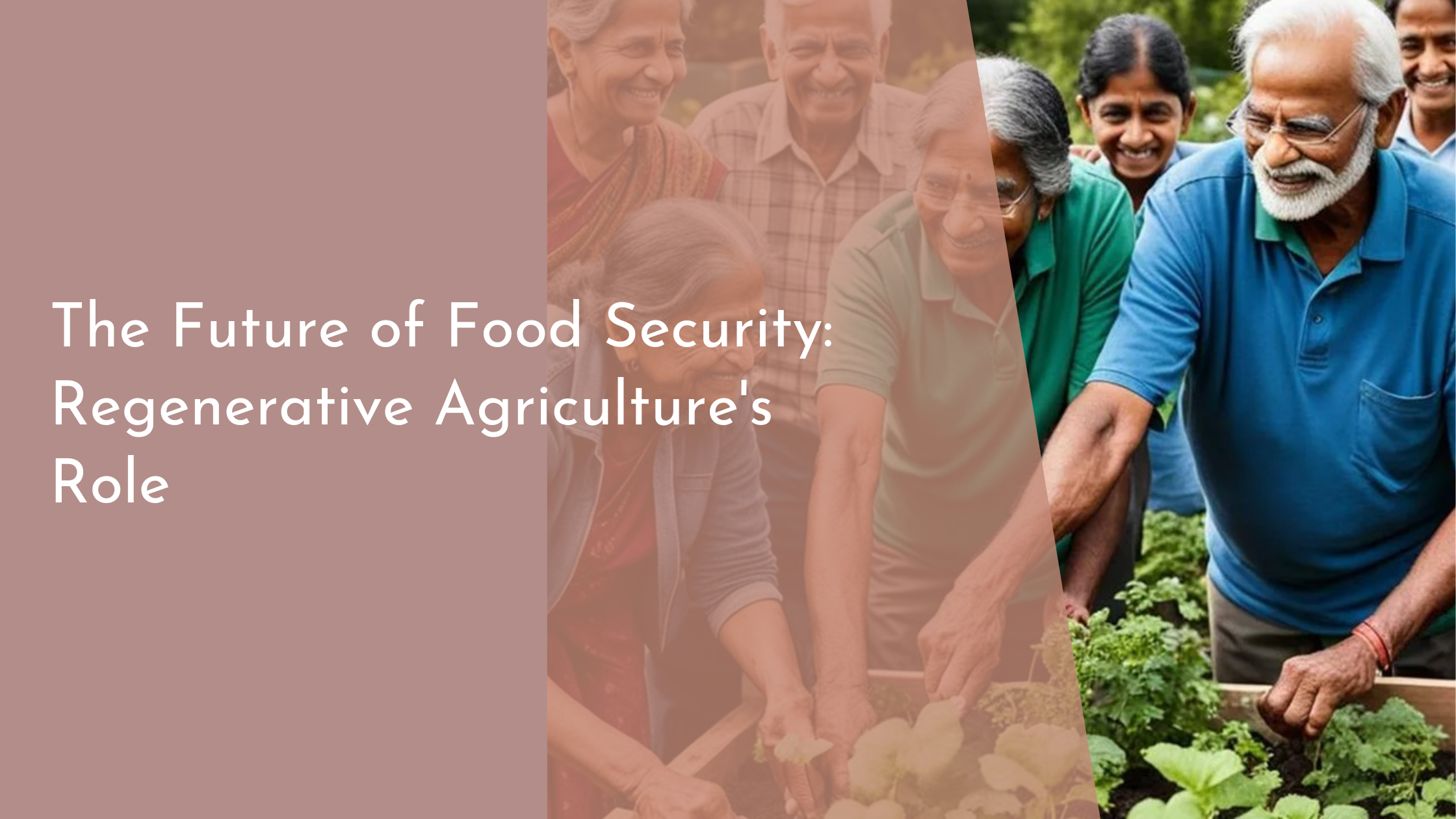The Future of Food Security: Regenerative Agriculture’s Role
As the global population continues to surge and environmental challenges intensify, the quest for sustainable solutions to ensure food security becomes increasingly critical. One promising approach is regenerative agriculture, a farming practice that not only enhances crop yields but also restores and revitalizes the environment. This article delves into the fundamentals of regenerative agriculture, its significant benefits for global food security, the innovations propelling its adoption, and the promising future it holds for our planet.
Understanding Regenerative Agriculture Basics
Regenerative agriculture represents a holistic method of farming that emphasizes the restoration and enhancement of ecosystems. Unlike conventional farming, which often prioritizes short-term yields at the cost of long-term soil health, regenerative practices focus on rebuilding soil organic matter, boosting biodiversity, and improving water cycles. Key techniques include crop rotation, cover cropping, reduced tillage, and the integration of livestock. These practices collectively work to enhance the natural fertility of the soil, reduce erosion, and increase resilience to climate variability.
Central to regenerative agriculture is the concept of working with nature rather than against it. By adopting a systems-thinking approach, farmers can create self-sustaining agroecosystems that benefit both the land and its inhabitants. This paradigm shift not only nurtures the soil but also fosters an environment where diverse plant and animal life can thrive. As awareness and understanding of these practices grow, more farmers worldwide are transitioning to regenerative methods, marking a significant step toward a more sustainable and resilient agricultural future.
Key Benefits for Global Food Security
One of the most compelling benefits of regenerative agriculture is its potential to significantly enhance food security on a global scale. By improving soil health, regenerative practices can lead to increased agricultural productivity and yield stability, even in the face of extreme weather conditions. Healthy soils are better equipped to retain water and nutrients, reducing the need for synthetic fertilizers and irrigation, which in turn lowers production costs and increases food availability.
Moreover, regenerative agriculture contributes to carbon sequestration, playing a crucial role in combating climate change. Soils rich in organic matter can act as carbon sinks, drawing down carbon dioxide from the atmosphere and storing it in the ground. This not only mitigates climate change but also supports biodiversity, which is vital for resilient food systems. The enhancement of biodiversity ensures the presence of beneficial insects and microbes that naturally protect crops, reducing dependency on chemical pesticides and fostering a balanced ecosystem that supports sustainable food production.
Innovations Driving Sustainable Practices
In recent years, numerous innovations have emerged to support and expand the reach of regenerative agriculture. Technological advancements, such as precision farming tools and data analytics, have empowered farmers to make informed decisions based on real-time insights into soil health and crop needs. These technologies enable farmers to optimize their use of resources, improving efficiency and minimizing environmental impact while maintaining high levels of productivity.
Another exciting development is the rise of community-supported agriculture (CSA) and farmer networks that promote knowledge sharing and collaboration among practitioners of regenerative farming. These networks provide a platform for farmers to exchange best practices, access training, and share resources, fostering a sense of community and collective progress. As more farmers join these networks, the widespread adoption of regenerative techniques becomes a realistic and achievable goal, paving the way for a sustainable agricultural future.
A Hopeful Outlook on a Regenerative Future
The momentum behind regenerative agriculture continues to build, offering a hopeful outlook for the future of food security. As more research underscores the environmental, economic, and social benefits of these practices, support from governments and international organizations is growing. Policies and incentives are being implemented to encourage the transition to regenerative methods, ensuring that farmers have the necessary resources and guidance to make the switch effectively. This institutional backing not only accelerates the adoption process but also strengthens the global commitment to sustainable agriculture.
Looking ahead, the integration of regenerative agriculture into mainstream farming practices holds the promise of a more resilient and equitable food system. By prioritizing the health of our planet and its ecosystems, we can create a future where food security is not just a goal but a reality for all. As individuals, communities, and nations rally around these principles, the potential for a regenerative revolution in agriculture becomes ever more tangible, offering a path toward a sustainable and thriving world.
Regenerative agriculture stands at the forefront of a sustainable agricultural transformation, offering a beacon of hope for securing our future food supply while nurturing the planet. By embracing practices that restore and enhance the environment, we can create a food system that is resilient, equitable, and capable of supporting a growing global population. As we forge ahead with innovative solutions and a collective commitment to change, the future of food security looks brighter than ever, with regenerative agriculture leading the way toward a sustainable and prosperous tomorrow.

